We all face this every now and again: we bring out our lawn mower to get our yard ready for summer and it just doesn’t start. It was perfectly fine the last time you used it, so what changed while it was packed away during winter?
Well, lawn mowers tend to act up when they’ve been sitting for a while, especially if they haven’t been regularly maintained.
In this article, I’ll explain what causes this and what you can do to get your lawn mower started (besides going lawn mower shopping, of course!)
Contents
What Causes A Lawnmower To Not Start After Sitting?

The number of reasons as to why a lawnmower just won’t start after sitting for a while are endless. This is unfortunately a very common occurrence as everyone gets geared into spring after a chilly winter, especially for those who have forgotten to winterize their lawn mower.
Having an efficient lawnmower is an essential part of lawn care, so check out the following potential reasons that seem to plague lawn mowers that have been out of action for some time.
P.S. Remember to always use protective gear when performing lawn mower maintenance and follow proper safety measures if you notice a safety warning pop up. Be attentive when handling sharp blades and engine parts.
Lawnmower Runs Out Of Gas Or Gas Is Too Old

The first part of this common reason is pretty self-explanatory. Your gas-powered lawnmower needs gas to run – so if it doesn’t have any gas, it’s not really going to be very useful. Fill it up with some gas and you should be good to go.
Now, if your gas is too old, you’re going to need to drain it all out from the gas tank before you can even think about replacing it. How will you know whether it’s “old”? If the gas has been sitting in your lawn mower for longer than a month, it’s considered old. Many people believe that a good old whiff of it is enough to tell whether or not it’s still good.
When dumping out the old gas from the gas tank, you need to drain the fuel tank and bowl and wipe it out to make sure there isn’t any old gas residue remaining. Once the gas tank has been cleaned thoroughly, you can go ahead and replace it with new gas.
If you left gas in your lawnmower over winter and it doesn’t want to start now, check out this video by Nx2overide for easy steps on how to get it to start by dumping out the old fuel:
If you’re looking to purchase some new fuel, TrueFuel comes highly recommended. This gasoline will be available at your local hardware store so it’s easy to come by. This fuel doesn’t contain any ethanol, it runs clean and it doesn’t get “old,” no matter how long it’s been in your lawnmower.
While TruFuel is a bit more expensive than regular fuel, it’s definitely a healthier option that’ll protect your machine in the long run. I don’t know about you, but I’d rather splurge on expensive fuel now rather than buy a whole new machine every couple of years.
If you’re someone who doesn’t need to use their lawn mower regularly and you fear that you’ll need to dump out old gas from the gas tank pretty much every time you need to use it, you can add a fuel stabilizer to it to keep the fuel fresh for much longer, for even as long as two years! This is a great way to avoid wasting expensive fuel when you rarely need to bring out your lawn mower.
When using a gas stabilizer, make sure to only use it on fresh gas. If it’s applied to old gas, it’s only going to prevent it from getting worse, but it’ll do nothing to help it regain its freshness.
Sta-Bil fuel stabilizer comes highly recommended because it’s effective in all types of gasoline, it prevents corrosion to your fuel tank and it’s safe to use in any engine that takes gasoline.
This video by DANDLINC on YouTube does a great job of explaining and demonstrating what you need to do if your lawnmower refuses to start after sitting:
Check The Carburetor
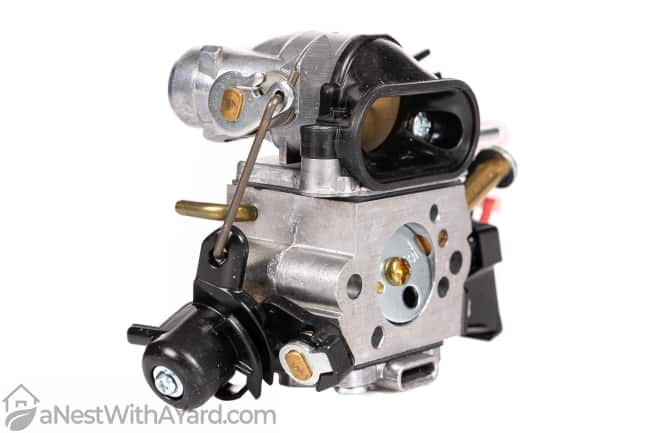
It is extremely important to keep your lawn mower’s carburetor clean, whether you use it regularly or once in a while. One that isn’t cleaned regularly will result in a faulty lawn mower engine, a corroded carburetor and regular replacements of parts.
Routine maintenance of your lawn mower’s carburetor can be done using a carburetor cleaner spray. These sprays are easy to come by and make for quite a cost-effective solution.
To clean your dirty carburetor, you will first need to remove the air filter and then spray it. Leave the sprayed air filter untouched for a while so that it breaks down any grime and dirt. You can then wipe it all off with a clean cloth.
If your carburetor has a float bowl, you also need to make sure it is cleaned well. You can do this by first removing the drain plug and dumping out the fuel. Then, you can spray it with the carburetor cleaner spray. If the spray doesn’t work well enough to clear all the dirt off, you might need to take your carburetor apart and give it a deep cleaning.
Carburetor deep cleanings should always be done very carefully because it is very important that it’s put back together again properly. If it isn’t done correctly, your lawn mower will start to leak gas, which isn’t good!
Check The Spark Plug

If your spark plugs aren’t clean or fully dry, the dirt, grime and moisture within them will cause two of their electrodes to malfunction. These electrodes can also start malfunctioning if they’ve been used for a long time. The easiest solution is to simply replace the old one with a new spark plug, and thankfully, they’re definitely one of the most cost-effective lawn mower parts.
To replace your faulty spark plug, first make sure that the mower’s engine is cool. Once you remove the wire from the spark plug, clean it properly to get rid of any dust or dirt, and then clean off any rust from the metal parts.
Using a socket wrench, remove the old spark plug and screw in a new one. It should be firm but not too tight. While you’re at it, you should also replace the spark wire and connect it to the spark plug. When you’re done, run the engine to make sure you’ve done it correctly.
Your spark plugs can tell you a lot about the health of your lawn mower if you examine it properly. For starters, having a lot of dry deposit around the electrodes could suggest that your lawn mower engine seal is broken or that your fuel-to-air ratio is imbalanced. Unfortunately, the spark plug is often the first part of a lawnmower to degrade and require replacement.
If there’s corrosion or discoloration at the end of the spark plug that fits into the mower, you definitely need to swap it out for a new one. There’s no harm in trying to clean it up a bit and reusing the existing one, but if you still can’t shake off the feeling that a thorough clean isn’t good enough, just go ahead and get yourself a new one.
If the mower’s spark plug itself is faulty, you can remove it with a wrench and wipe away the black deposit with a clean cloth. If it has a brown deposit, there’s nothing to worry about because that’s normal. Make sure that it is fitted back into the socket properly so that it doesn’t come loose.
On the other hand, if you notice that your mower’s spark plug is wet, it’s a sign that there’s a gas leak that’s allowing fuel into the combustion chamber. This means that your lawn mower will require a service from a professional to properly investigate.
Remember to remove spark plugs before your conduct any sort of lawn mower maintenance to avoid any accidental starts.
Check The Main Jet
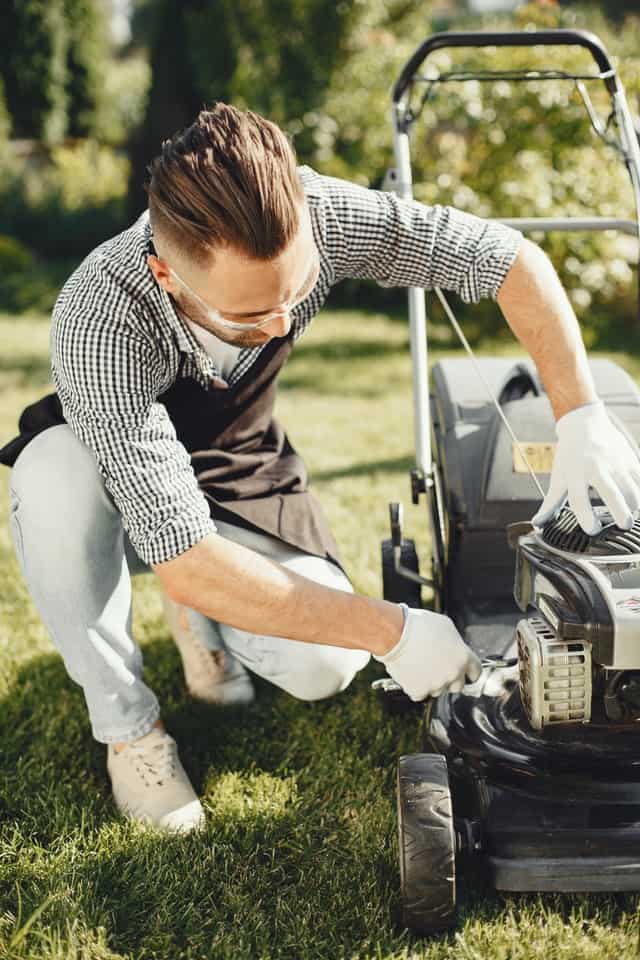
I’m sure you’ve noticed by now, but keeping the different parts of your lawn mower maintained is key to having it run well without any hiccups along the way. The same goes for your lawn mower’s main jet. The main jet is one of the most important lawn mower parts and your lawn mower will pretty much not even start if it’s not clean or if there’s an issue with it.
To clean the main jet, you will first have to remove the spark plug cap and turn off the fuel valve. Then, you’ll need to remove the carburetor bowl, drain the fuel tank and then check it for any dirt or old gas.
If you find any blockages in the main jet, you can spray it with carburetor spray and then gently push a wire through it if you suspect there’s more dirt that hasn’t yet been cleared. Apply spray cleaner once again after the wire has been removed and you should be good to go!
Remember that most lawn mowers work by allowing fuel to flow through the main jet to the carburetor and then into the combustion chamber. So if any of these parts require cleaning or changing, you’d need to prioritize them, or else your lawn mower won’t start.
Change The Oil

Checking the oil in your lawn mower is as important as making sure it has fuel to run! When checking the oil, pay attention to whether it contains good quality oil, whether there’s any residue in it and whether there’s enough of it in the lawn mower. Most lawnmowers have small engines so they don’t require much oil at all.
To check whether your lawn mower needs an oil change, first find the fuel cap on the crankcase and clean the area around it before opening. To inspect the oil, you can use a clean cloth or a dipstick.
To change the oil, remove the spark plug and then locate the oil drain plug. Drain the oil by turning the lawn mower onto its side above an oil pan or a layer of newspaper and then wipe it clean with a cloth or tissue paper. Make sure that no dirt or debris falls into the crankcase.
When all the oil has been drained, put back the drain plug and make sure it’s fitted on tightly (you don’t want any new oil seeping through!) You can check out this article and consult your lawn mower’s owner’s manual to check what oil is required for your specific mower. Fill it up and then run the mower’s engine to check for leaks.
While your oil may not be the primary cause of a mower that doesn’t start, it should definitely be considered as a contributing factor.
YouTube user Repairclinic.com does a great job of explaining the many potential reasons why your lawnmower isn’t starting in this video:
Check Whether The Air Filter Is Clogged

A smooth flow of oxygen is an important aspect of a well-running machine. Having a clogged intake filter will have a massive impact on how your lawnmower operates, and it might even cause it to not start at all!
The two types of air filters in lawnmowers are called foam only and dual element. The foam filter traps dirt and debris when the motor oil is used and should be cleaned once every three months.
The air filter of a lawn mower has a guard which prevents carburetor debris and dirt from reaching the engine. If this air filter gets too clogged and hasn’t been cleaned for a long time, it’ll affect the engine and the lawn mower won’t start.
Clean or replace the air filters regularly, such as after every 25 hours of use. There’s a different method to changing a clogged air filter on push mowers and riding lawn mowers. To find the correct method, you need to consult your lawn mower’s owner’s manual. The following steps to replace a clogged intake filter can be used as a guideline.
To replace the foam filter, you will first need to remove the screw and the existing clogged filter. Throw out the clogged intake filter and clean the area before inserting a new one. When you’re ready to fit in a new one, soak it in new oil and then remove any excess oil using a clean cloth if it has been exposed to too much oil. Reassemble the filter and reinstall the carburetor.
To replace a dual filter, you will first need to remove the knob and then use foam pre-cleaner on the filter. If the clogged air filter is too worn out or filthy, it may be best to replace it instead. Remember that dirt and debris can very easily slip through air filters that have the slightest perforation, so in my opinion, replacing them with new ones is always a better idea.
Different lawn mower makes will require varying air filters. Many air filters are compatible with multiple lawnmower models.
Check The Brake Cable

Your lawnmower may not start if the brake cable is too loose. You can pull the brake handle and then pull on the brake cable to check the tension on the brake. This way, you’ll be able to determine whether it is properly tense or whether there’s any give.
To check whether this is the reason why your lawnmower isn’t starting, you can hold the brake cable tight while trying to start it. If your mower starts, you’ll know that it’s the brake cable that’s the issue. To set the cable properly, you can use a crescent wrench and some vice grips.
Check The Flywheel Key
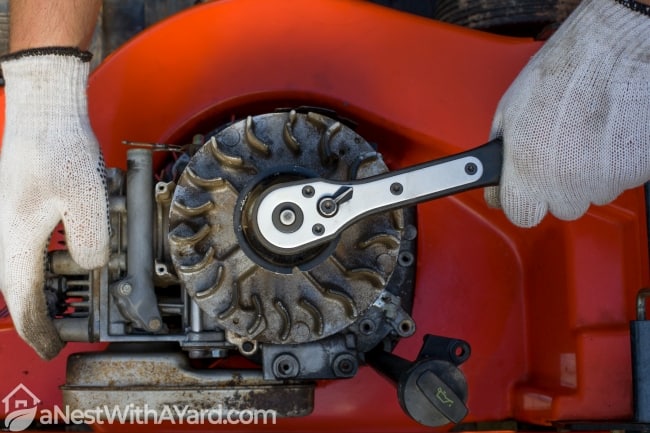
The flywheel key in lawnmowers is the wheel that starts spinning when you start it. If a hard object like a rock happens to hit against it with full force, this can result in a broken flywheel key. This, in turn, will prevent the lawnmower from starting when you pull the cord.
To check whether the flywheel key is the issue, you will need to first remove it from your mower. This can be a little tricky because the nut that keeps it in place in the mower is typically very tight, but in order to loosen and remove it, it needs to be completely stationary.
Clean Out The Mowing Deck
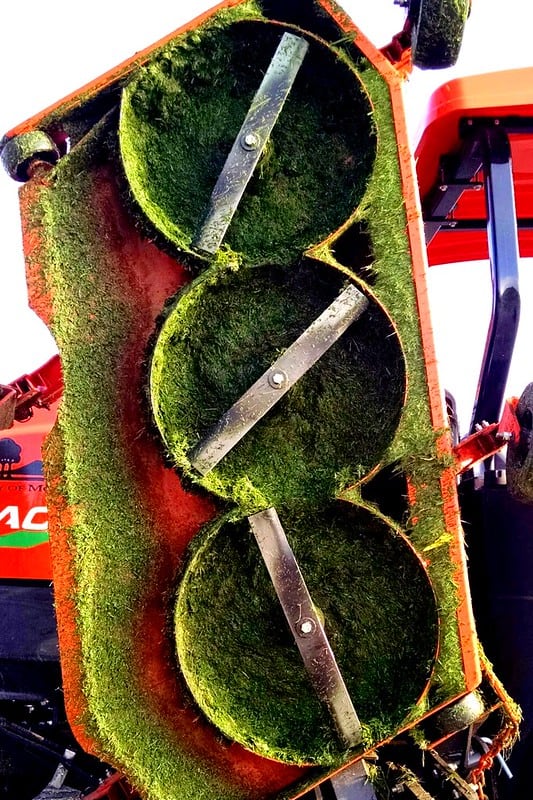
The mowing deck is where grass clippings are collected as the lawnmower makes its way through your lawn. When the clippings haven’t been cleared out in some time, they tend to clog the mowing deck. This is especially so if you’re mowing wet grass. A clogged mowing deck will prevent the lawnmower blade from turning.
The main sign of a clogged deck is if the starter rope is difficult to pull or appears to be stuck. Place the mower onto its side and examine the underneath of the mower. Be extra careful if you have a riding mower and try to avoid this step if you can. Use a trowel to loosen up and get rid of any clumps of grass clippings that may be in the way.
To prevent this from happening again, you can do a quick clean of your mower every time you finish mowing so that you prevent build-up.
How To Make Sure Your Lawnmower Starts After Sitting
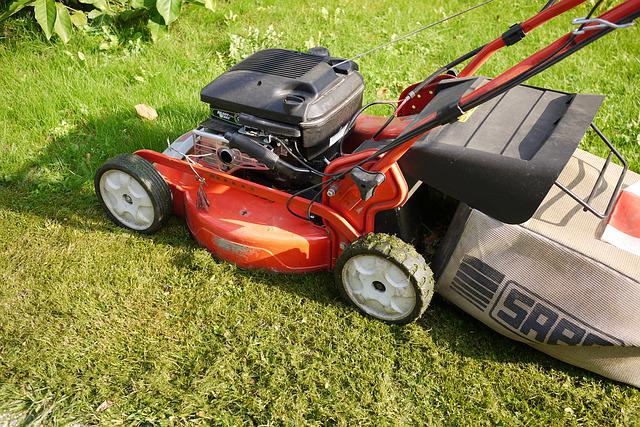
Proper Storage
If you know that your lawnmower isn’t going to be used for a while, such as over winter, you need to make sure that it is stored in a safe place that’s going to protect it from the elements. For winter storage, a garage or garden shed would be best. Any area that’s away from a furnace or water heater will be suitable.
Use Gas That Doesn’t Contain Ethanol
Ethanol has been known to damage small motor carburetors over time. While gas without ethanol is more expensive, it’s definitely worth the extra investment, as you’ll be saving on replacement parts and regular trips to a lawnmower mechanic.
Get Professional Lawn Maintenance
While there are many things we can DIY at home, some things are best left to the professionals. Taking care of the day-to-day maintenance of your lawnmower is great, but when it comes to annual servicing and major repairs, it’s better to hand it over to a professional lawnmower mechanic to sort it out for you.
You may be incurring a cost by engaging with a professional, but it’s definitely a worthwhile investment that’ll boost your lawnmower’s life span and keep you off the lawnmower market for a good couple of years.
FAQs
Why Is It So Hard To Start My Lawn Mower?
It is so hard to start your lawn mower because it could have a loose or dirty spark plug, a dirty air filter or fuel filter, or fuel may not be reaching the engine. You can clean the spark plug and air filter and tap the side of the carburetor.
Why Does It Take 10 Pulls To Start My Lawn Mower?
It takes 10 pulls to start your lawn mower because the fuel filter is filled with debris, the spark plug is faulty, the battery is damaged or it doesn’t have fuel to run. A faulty engine will take more pulls to start because it won’t combust the oxygen and fuel.
Can I Use Vegetable Oil In My Lawn Mower If I'm Low On Money?
You can use vegetable oil in your lawn mower if you’re low on money. However, this can only be done without any modifications if you have a diesel engine mower. Vegetable oil isn’t recommended for regular use because it can do more harm than good, such as damaging the engine.
Final Thoughts
Let’s face it: lawn mowers are expensive machines. If there’s a chance you can fix your existing mower and restore it back to working condition, you should definitely take it!
There’s nothing worse than wanting to get your yard ready for spring but your lawnmower just doesn’t want to cooperate. I hope my article has helped you figure out why your lawn mower may be acting up after sitting for a while and that these tips help you ensure that your mower runs smoothly!
Leave a comment below if you found this helpful! I’d love to hear from you.
Last update on 2024-04-23 at 10:04 / Affiliate links / Images from Amazon Product Advertising API


